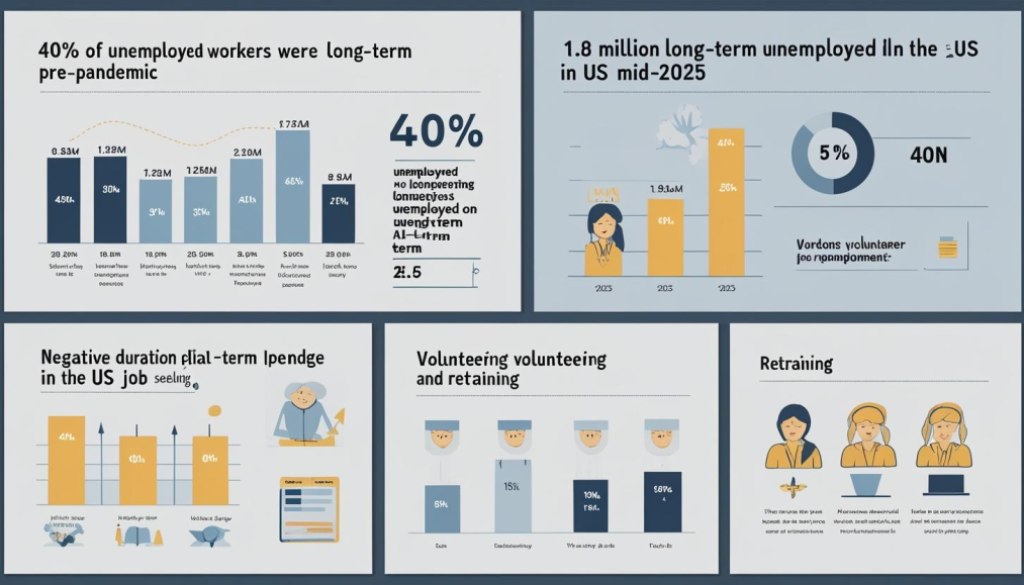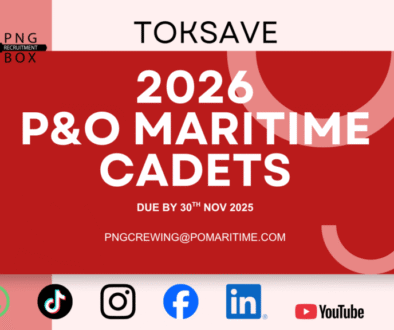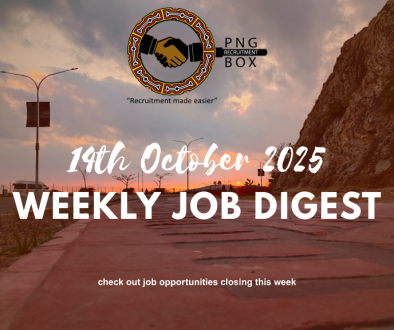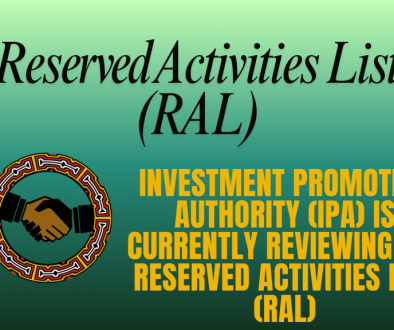Re‑Entry After the Long Haul: How to Bounce Back After Years of Unemployment
Imagine climbing back into a boat after drifting at sea for years. That’s what re‑entering the job market after an extended period—say, three years—can feel like. It’s daunting. Isolated. Full of uncertainties. But as many have shown, it’s far from impossible.
Consider this: in the U.S., before the pandemic, around 19% of unemployed workers had been jobless for 27 weeks or longer. That share spiked to nearly 40% during COVID-19—and even today, long-term unemployment remains a substantial part of the labor force (Wikipedia, Federal Reserve Bank of Atlanta). And, as reported just days ago, the U.S. now has over 1.8 million people unemployed for 27 weeks or more—the highest level since 2017—with the median duration hitting 10.2 weeks (The Wall Street Journal).
Meanwhile, in Papua New Guinea, the picture looks very different. According to recent global data sources, PNG’s overall unemployment rate in 2024 was around 2.7%, up slightly from 2.66% in 2023. Youth unemployment sits a bit higher at 3.8%. While PNG does not yet publish detailed statistics on long-term unemployment (27+ weeks jobless), these figures highlight that unemployment in PNG—though relatively low compared to many countries—still presents challenges, especially for young jobseekers entering a limited labor market.
That context helps us understand two truths: one, the longer someone stays out of work, the harder re‑entry becomes—and two, with the right strategies, it’s absolutely possible.
1. Own the Gap: Don’t Bury It
Story: Picture an applicant who led a volunteering project during her break—she confidently explains her gap as a period of growth and caregiving. Employers appreciate honesty and framing.
Facts: Research shows that long‑term unemployed individuals face diminished callbacks—but transparency paired with active, purpose‑driven explanations helps overcome that stigma (Federal Reserve Bank of Atlanta, Liberty Street Economics).
2. Revamp Your Resume and Cover Letter
Story: A candidate switches to a hybrid resume—skills at the top, chronology next—tailored for each job. That tweak gets her noticed in a crowded applicant pool.
Evidence supports that functional or hybrid formats emphasize current capabilities over past gaps—especially when combined with customised cover letters demonstrating enthusiasm and readiness.
3. Upskill: Show You’re Future‑Ready
Story: Someone treats their career break as a chance to upskill—earning a Google certification while rebuilding confidence. That commitment to growth becomes a conversation starter, not just a filler.
This aligns with data: employers value recent, relevant qualifications. Upskilling through online platforms like Coursera or LinkedIn Learning signals initiative and resilience.
4. Bridge the Gap with Volunteering or Freelancing
Story: After three years off, a job seeker volunteers at a local NGO, gaining experience and new network connections. That activity becomes a central part of her comeback narrative.
Such activities not only refresh skills and confidence but also demonstrate momentum—crucial in counteracting negative duration effects (WorkRise Network).
5. Let Your Network Be Your Megaphone
Story: A former colleague refers someone who’s seeking work back into a hiring pipeline—something that wouldn’t happen if they’d stayed quiet.
Networking works—many roles never make it online.spreading word-of-mouth among contacts often opens hidden doors.
6. Craft Your Personal Pitch
Story: At a networking event, a job seeker confidently says, “I’m Jane—a project manager who paused for caregiving, now energized, upskilled, and ready to lead again.” That clarity leaves a mark.
A crisp personal pitch helps shift focus from the break to what they bring now.
7. Persistence Wins
Story: A candidate handles 20 rejections before landing a job. Each “no” sharpens her approach.
Indeed, long-term job seekers can face wall-like resistance—but setting weekly goals (applications, contacts, learning milestones) keeps momentum, motivation, and progress alive.
Facts & Figures That Underscore These Tips
| Insight | Why It Matters |
|---|---|
| ~40 % of unemployed workers were long‑term pre‑pandemic-ish—double 2019 levels (Federal Reserve Bank of Atlanta) | Demonstrates the scale and uniquely urgent nature of the challenge. |
| 1.8 million long-term unemployed in the U.S. as of mid‑2025 (The Wall Street Journal) | Long-term unemployment remains a modern hurdle even in a seemingly strong labor market. |
| Negative duration dependence—chances of landing a job decrease the longer you’re out (Liberty Street Economics) | Emphasizes the importance of proactive strategies like upskilling and networking. |
| Volunteering and retraining help signal relevancy and forward motion (WorkRise Network) | Proving your value matters more than your gap length. |
Closing Thoughts: Your Career Is Not Over—It’s Pivoting
Being out of work for three years doesn’t define you. It’s a chapter, not the headline. With self-awareness, strategic storytelling, skill refreshment, and persistent action, your re-entry can be powerful.
At PNG Recruitment Box, we know that every career has a comeback arc waiting. Share this journey on your site to inspire others—and maybe light the spark someone needs right now.
Source: This article was inspire by Kelu Vanua’s post on LinkedIn embedded below. It was further enhanced using AI.
REMEMBER! When applying for a job, it’s crucial to include a cover letter that clearly outlines your interest in the position and your suitability for the role, along with an updated curriculum vitae. Here are 5 valuable tips on crafting emails that grab attention and get read, as well as advice on structuring your CV to make a strong impression. By following these guidelines, you can enhance your application and increase your chances of landing the job you desire.
Discover more from PNG Recruitment Box
Subscribe to get the latest posts sent to your email.




